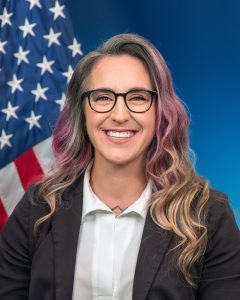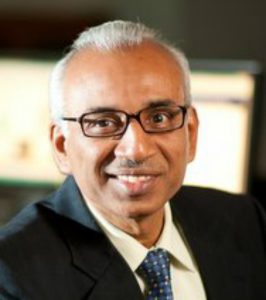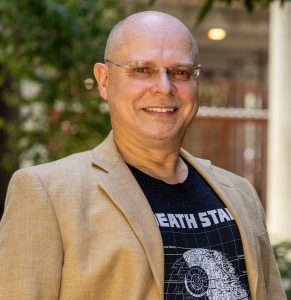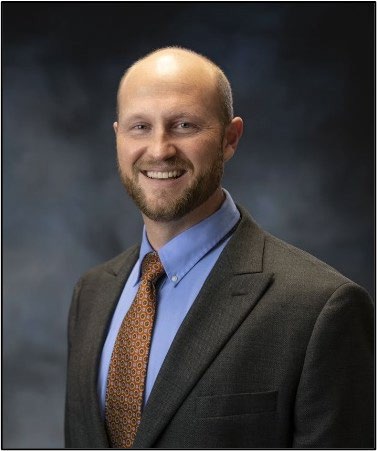Keynotes
| Time: Monday, November 11 | 8:15 am – 9:00 am |
| Coming Soon! |
|
Presenter: Dr. Shauna Sweet, DARPA Abstract: Coming Soon! Bio: Dr. Shauna Sweet joined DARPA as a program manager in June 2024 to develop, execute, and transition programs related to emergent risks and advanced analytic methods. Her research interests include high-assurance complex systems design and development, psychometric modeling and measurement theory, generative AI, modeling and simulation, and the design and deployment of synthetic data for system and algorithm test and evaluation. Sweet came to DARPA from Galois, where she led the transition and fielding of multiple high-assurance mission-critical systems for the Department of Defense (DoD) as the lead systems engineer in government and contracted roles, including DARPA’s Cooperative Secure Learning program. Before that role, she acquired extensive experience in the collection, management, and analysis of complex and longitudinal data sets, synthetic data generation, statistical simulations, and evaluation study design in roles at Two Six Technologies, the World Bank, Peraton Labs, and the DoD. She was deployed as a civilian with the 82nd Airborne Division, serving as the in-country survey methodologist at Bagram AFB, Afghanistan. Sweet holds a doctorate in measurement, statistics, and evaluation from the University of Maryland (UMD), a Master of Science in survey methodology from UMD, and a Bachelor of Arts in Sociology from Hamilton College. She also received a National Science Foundation grant to investigate the applicability of psychometric modeling frameworks to calibrate prompt features submitted to large language models. Her work has been included in various publications, and she currently serves as a reviewer for several journals, conferences, and funding agencies. |
| Time: Tuesday, November 12 | 8:15 am – 9:00 am |
| Digital Twins for Diagnosis, Prognosis, and Decision-Making |
|
Presenter: Professor Sankaran Mahadevan, Vanderbilt University, Nashville, TN, USA Abstract: The digital twin is an evolving virtual representation of a physical system that integrates information obtained from sensor data, physics models, as well as manufacturing, operational history, and health history of the physical system. As more and more data become available, the resulting updated model becomes increasingly accurate in predicting future behavior of the system, and can potentially be used to support several objectives, such as diagnosis, prognosis, and decision-making. This talk will survey recent advances in digital twin methodologies to support all three objectives. Scaling up the digital twin technology to support real-time decision-making is a challenge, and several strategies that combine recent advances in sensing, computing, data fusion and machine learning will be discussed. Several use cases related to infrastructure, transportation, and manufacturing systems will be discussed. Future needs to advance the digital twin technology will be outlined. Bio: Professor Sankaran Mahadevan (Vanderbilt University, Nashville, TN, USA) has more than thirty-five years of research and teaching experience in uncertainty quantification, risk and reliability analysis, machine learning, structural health diagnosis and prognosis, and decision-making under uncertainty. He has applied these methods to a variety of structures, materials and systems in civil, mechanical and aerospace engineering. His research has been extensively funded by NSF, NASA, DOE, DOD, FAA, NIST, as well as GM, Chrysler, GE, Union Pacific, and Mitsubishi, and he has co-authored two textbooks and more than 350 peer-reviewed journal papers. During the past decade, he has been at the forefront of academic research on digital twin methodologies for aircraft, rotorcraft, ship structures, and additive manufacturing, funded by FAA, U.S. Air Force, U. S. Army, and NIST. Professor Mahadevan has served as General Chair of several prominent conferences such as the AIAA SDM Conference, AIAA Non-Deterministic Approaches Conference, ASCE Engineering Mechanics Conference, and three PHM Society Annual Conferences, including PHM 2022. He is a Fellow of AIAA, Engineering Mechanics Institute (ASCE), and PHM Society. |
| Time: Tuesday, November 12 | 1:00 pm – 2:00 pm |
| In the Basin of Aitken Where the Shadows Lie – Humanity’s Future on the Moon & Beyond |
|
Presenter: Professor Wolfgang Fink, The University of Arizona, Tucson, AZ, USA Abstract: Coming soon! Bio: Prof. Wolfgang Fink, Ph.D. is a German-American theoretical physicist and the inaugural Keonjian Endowed Chair with joint appointments in the Departments of Electrical & Computer Engineering, Biomedical Engineering, Systems & Industrial Engineering, Aerospace & Mechanical Engineering, and Ophthalmology & Vision Science at the University of Arizona. He was a Senior Researcher at NASA’s Jet Propulsion Laboratory (2001-2009), a Visiting Associate in Physics at the California Institute of Technology (2001-2016), and held concurrent appointments as Visiting Research Associate Professor of Ophthalmology and Neurological Surgery at the University of Southern California (2005-2014). Prof. Fink is the founder and director of the Visual and Autonomous Exploration Systems Research Laboratory (https://www.vaesrl.com/) at Caltech and at the University of Arizona. He obtained a B.S. and M.S. degree in Physics and Physical Chemistry from the University of Göttingen in 1990 and 1993, and a Ph.D. “summa cum laude” in Theoretical Physics from the University of Tübingen in 1997. Prof. Fink is a Fellow of NAI, ARVO, SPIE (lifetime), PHMS, and AIMBE, and Senior Member IEEE, as well as the 2015 daVinci Fellow and the 2017 ACABI Fellow of the University of Arizona. He is the current Vice President of the PHM Society and holds a Commercial Pilots License for Rotorcraft. Pursuing a trans-disciplinary systems engineering approach in “smart service systems” in general, Prof. Fink has focused his research and technology development efforts on autonomous systems (robotic space exploration), biomedical engineering for healthcare (especially ophthalmology and vision care), human-computer interfaces (artificial vision implants), smart platforms for mobile- and tele-health, and computer-optimized design. Prof. Fink has over 268 publications (incl. journal, book, and conference contributions), 6 NASA Patent Awards and 5 Techbrief Awards, as well as 31 U.S. and foreign patents awarded to date in areas such as: biomedical devices and tests; autonomous (robotic) systems; traverse optimization; vehicular safety; signal processing; data fusion, analysis, and anomaly detection; network-on-chip design; neural stimulation; nano-ultra-capacitors for implantable devices; MEMS fabrication; and multi-objective optimization. Among numerous awards Prof. Fink was named recipient of the NASA Space Flight Awareness (SFA) Launch Honoree Award in 2002, co-recipient of the 2009 R&D Magazine’s R&D 100 and R&D 100 Editors’ Choice Award both for the DOE-funded Artificial Retina Project, co-recipient of the 2009 NASA Board Award for his pioneering work on a disruptive autonomous space exploration paradigm, co-winner of the $200,000 DOE/NREL-sponsored E-ROBOT Prize in 2021, and recipient of the 2023 SPIE Meinel Technology Achievement Award. |
| Time: Wednesday, November 13 | 8:15 am – 9:00 am |
| Rapid Demand Changes Spurring a Need for Rapid Innovation |
|
Presenter: Matt Rasmussen, TN Valley Authority Abstract: Coming Soon! Bio: Matt began his 20-plus year TVA career at Browns Ferry as a maintenance engineer. He has held several leadership positions at both Browns Ferry and Sequoyah Nuclear Plants. He obtained his Senior Reactor Operator License at Browns Ferry, before serving as shift manager, Operations superintendent and Work Management director. Matt moved to Sequoyah Nuclear Plant where he led the Maintenance organization prior to being promoted to plant manager and then site vice president. In 2020, Matt returned to Browns Ferry as site vice president where he helped lead the station to its first INPO exemplary rating in almost 2 decades before transferring to the Fleet Center in 2022 as Senior Vice President, Engineering and Operations Support. He holds a bachelor’s degree in mechanical engineering from Auburn University in Alabama and is a graduate of TVA’s Advanced Leadership Program and INPO’s Senior Nuclear Plant Management Program and Senior Nuclear Executive Program. |




